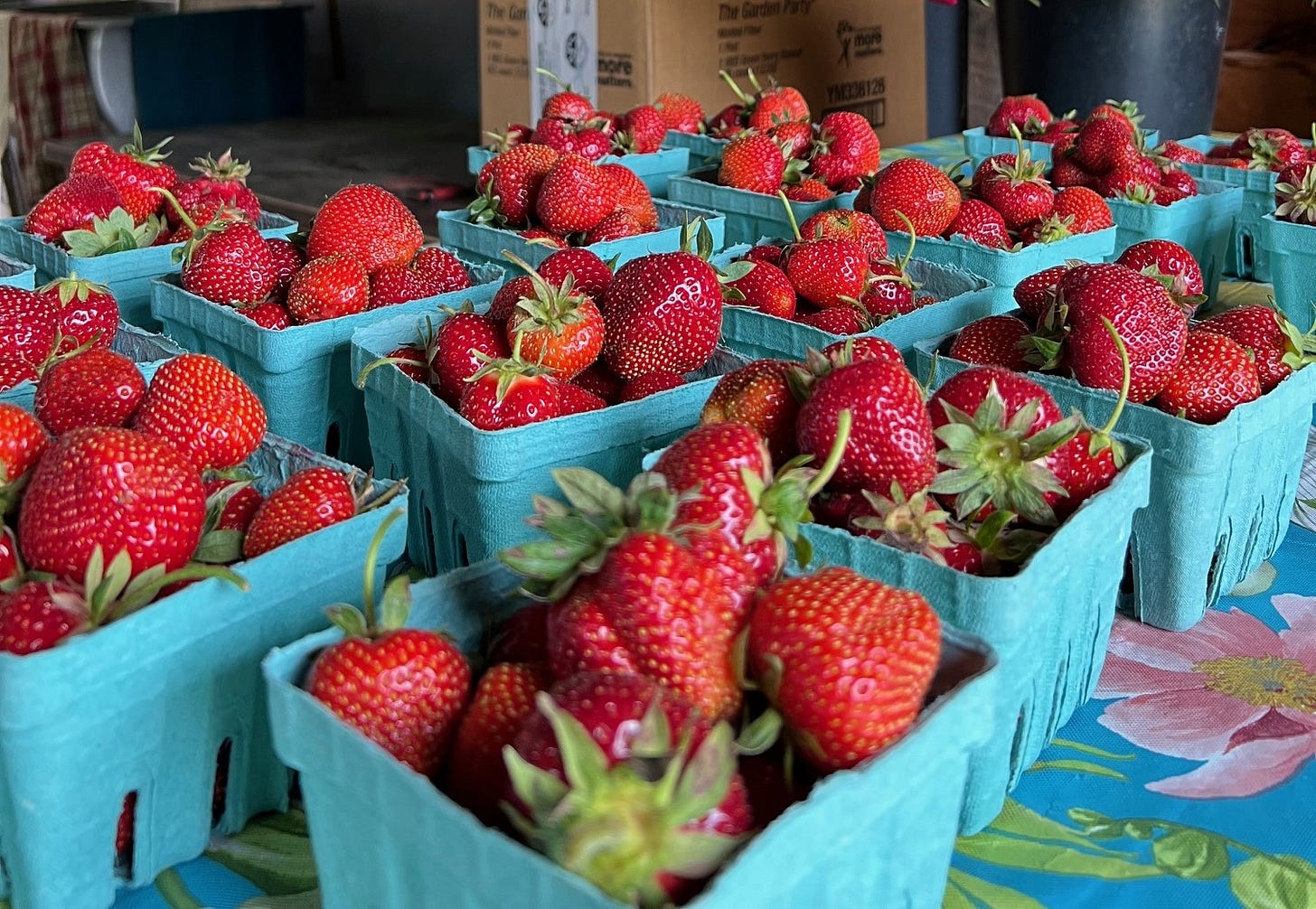STRAWBERRIES LOVE SUN; it gives sugar and perfume. Maximum flavor arrives with the longest days of the year. What I call high-note strawberry aroma, the most desirable, is linked with a pleasing acidity, at least in my cool climate. But flavor like that is elusive. Most strawberries are picked underripe, so they’ll keep. The best of the wild are unbeatable, but those little berries lack generosity, and larger ones can have most or all of the wild flavor.
The alpine strawberry, or fraise des bois (Fragaria vesca), is native to Europe. So is the candy-scented musk (F. moschata), which is too low-yielding to be raised in a significant commercial way, although it used to be. The Virginia, or common, strawberry (F. virginiana) grows wild from Newfoundland to Alberta, Oklahoma, and Georgia, and the Chilean strawberry (F. chiloensis) grows wild on the Pacific Coast of North and South American as well as in Hawaii. Both the Chilean and Virginia were carried to Europe, and by the mid-1700s in the mild marine climate around Plougastel in Brittany, gardeners were raising the two American kinds side by side. Spontaneous crosses occurred, producing plants with larger fruit. The French named the hybrid ananassa for its pineapple scent. (Modern strawberries are classified as Fragaria x ananassa.) Gardeners in England, Holland, and France further selected for size as well as for varied fruit flavor, although pineapple was the most prized.





